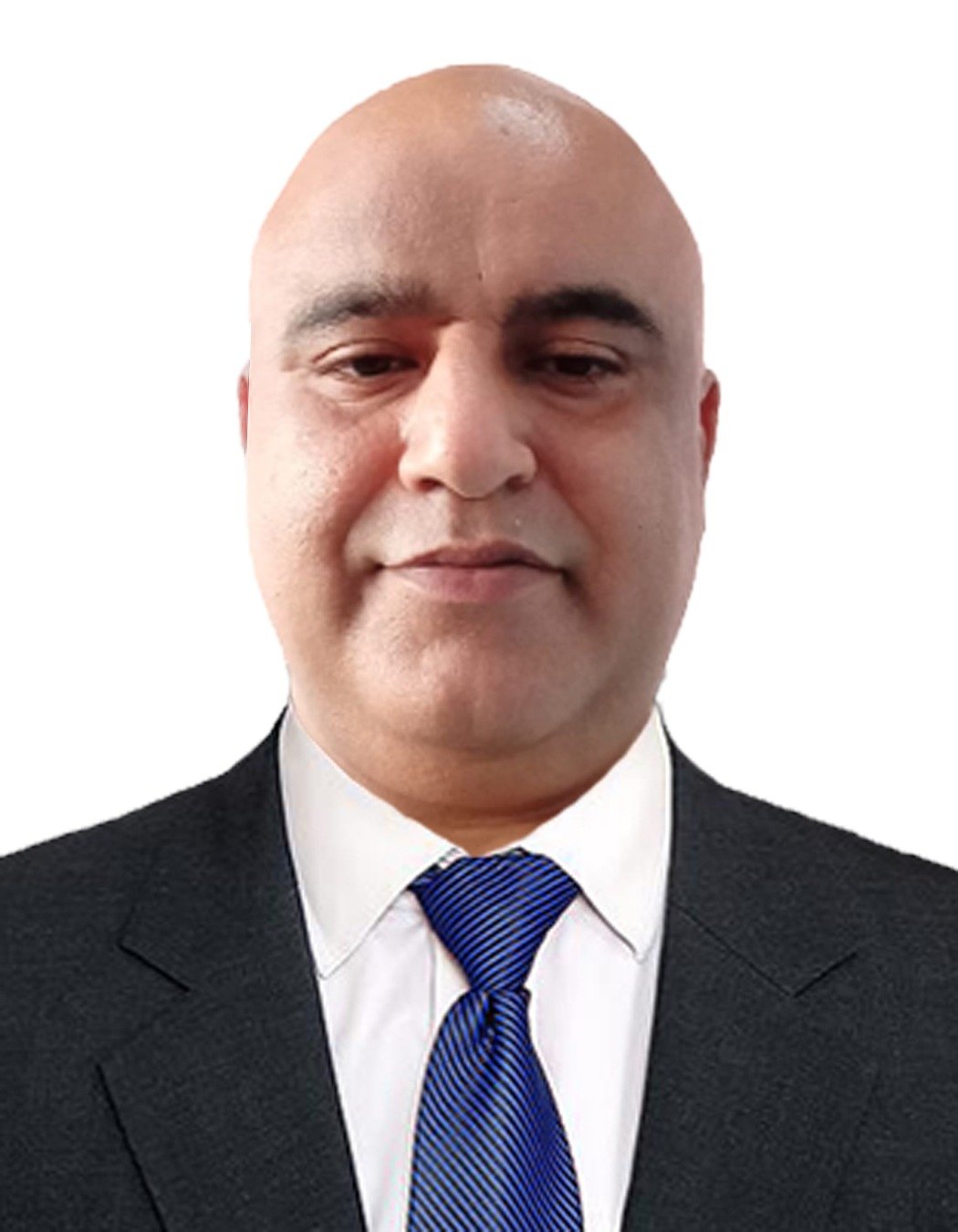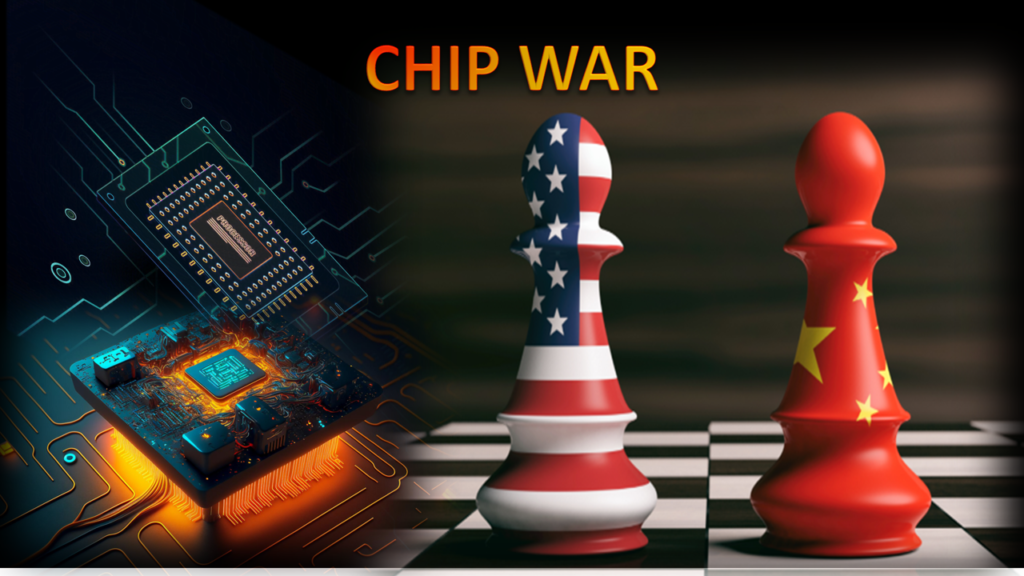ABC of Chip War – Part III – Geopolitics and Chips Continued: Is chip war the most important struggle between U.S. and China?
ABC of Chip War: Eight Factors and The Game Changer
Fast forward to the latest competition in chip industry. Chip War is different this time from the 80s. Eight factors are important.
One Japan was just an economic competitor but geopolitically aligned to U.S. China however is considered a geopolitical threat.
Second is the issue of conflict with globalized economy. “The problem”, as a White House official in Trump era was told by a semiconductor executive, “is that our number one customer is our number one competitor”. Just like Japan in the 70s which turned the table in 80s. This paranoia and economics makes Silicon Valley jittery when too much of control is maintained on business.
Third is the concentration of chip supply chain in East Asia and great power rivalry with South China Sea as its epicenter. Taiwan is vital interest of China. China has a bitter history and geographical disputes with Japan. China also is the key supporter of North Korea and has fought a war against South. Hong Kong, despite its autonomous status, is no more autonomous and the world knows it.
Fourth is Chinese military capacity. It cannot be put more explicitly. Regardless of any assurances or support; Taiwan simply cannot defend herself nor her strategy of fight till help arrives a practical one. Because as of today, in a conflict over Taiwan U.S. military cannot win. This confusion is evident at least since U.S. Pivot to Asia. U.S. military doctrines and concepts have been changing almost in accordance with Moore’s law. Air Sea Battle in 2010, Joint Concept of Access and Maneuver in Global Commons (JAM-GC) in 2015, Distributed Lethality in 2021. These are indicators of the mammoth military problems for U.S. in the Indo-pacific. Whether, China will go beyond the threats to actual use of force is another debate. Yet disruption to chip supply chain is a valid worry in given present circumstances.
Fifth and historically common factor is that U.S. still dominates the chip choke points. Be it R&D, software, hardware, top companies using chips in form of electronics or internet based firms, military spending, chip manufacturing and raw materials; in all fields of chip industry U.S. and her allies dominate. Not only this, most of them are in conflict with China.
Sixth, U.S. still is the largest economy in the world and dominates world’s financial sector and money flows with USD, although increasingly under pressure, being global currency for international trade. U.S. thus has leverage in weaponized interdependence. It has been demonstrated through economic sanctions against Iran, North Korea, Cuba, Venezuela and Russia. Chinese Huawei experience itself is a clear indicator. While level of success is debatable; adverse impact on targeted entities is undeniable.
Seventh, asymmetry of technological application amplifies the control complexity against duality of COTS technology. Not realizing the ways in which technology may be used by the opponent; control regimes will always have loop holes. This is an opportunity for the other side. Garmin GPS have been used in MALE UCAVs. Devices from police car sirens have been used to make atomic weapons. It is therefore extremely difficult to keep technological know-how air tight especially when technology can be used in innovative ways.
Eighth and perhaps the most vital issue for the future is the status as AI Superpower. A book, titled ‘The Age of AI and Our Human Future’, written by Henry Kissinger, Eric Schmidt and Daniel Huttenlocher, terms AI as a class of technology that augurs a revolution in human affairs. Putin in 2017 stated that leader in AI will rule the world. In 2021, group of American tech and foreign policy experts chaired by ex-Google CEO Eric Schmidt released a report. It predicted that China could surpass the U.S. as the world’s AI Superpower. Experts on Chinese military claim that PLA has been deliberating on AI weapons since last decade. President Xi Jingping himself had reportedly urged PLA for ‘military intelligentization’.
Ben Buchanan from Georgetown University maintains that to harness AI; ‘triad’ of data, algorithm and computing power are required. Although, success of any one country in AI is not guaranteed as it depends on host of complex technologies. Therefore, key observation here is that data has been available for quite sometime. Algorithm also has been available. However, it is the computing power that has made the real difference. Chip is central to that computing power.
Nvidia, U.S. firm whose parallel processing Graphics Processing Units (GPUs) have empowered AI development. As per macrotrends.net, Nvidia’s year high stock price in 2018 was below 72 USD. As per digitalscholar.in, this was the year when OpenAI started development of ChatGPT. In 2023, year high stock price of Nvidia has been above 493 USD. This is just one company whose value has seen exponential growth largely due AI. One can well imagine the global impact in the future. Whether, one agrees with President Putin’s statement regarding AI leader ruling the world or not. One can be assured of the impact AI will create. It is perhaps a development akin to invention of a wheel. Only curtailed by algorithmic imagination, otherwise everything is possible. It is a real game changer.
ABC of Chip War: U.S. Preemption and Chinese Counteractions
U.S. firms continued complaining about China’s practices of influencing chip firms as allegedly government continued to influence foreign firms to transfer key technology, IP, talent, and R&D to China. China is the largest market. Therefore, it has levers that can be used to support Chinese chip industry. Was China the only country doing so? Not at all.
By 2015, while U.S. Officials from Trade department, Pentagon, Intelligence Agencies and Justice department brought series of observations and alleged evidence against Chinese undertakings to edge out U.S. chip industry. Globalization and the mantra of 90s ‘running faster’ remained the policy during almost entire tenure of President Obama.
In 2016, nearing the end however, Obama’s Commerce Secretary during a high profile address in Washington declared that America cannot afford to cede leadership in semiconductors industry. Identifying China as the central challenge, she also blamed China for unfair trade practices, massive non-market based government interventions and acquisition of firms based on government interests rather than commercial. This was the start and the hope was that subsequent Hillary Clinton administration will continue to carry forward the agenda.
Varying estimates exist as far as Chinese subsidies to chip industry are concerned. They range between 150 to 250 billion USD. According to a Wall Street Journal review, Chinese government has provided subsidies up to 75 billion USD to Huawei alone in the form of subsidized land, state-backed credit, and tax deductions. Although this may be a red flag in U.S. laissez-faire system, however, it is not very different in East Asian countries when it comes to support for key industries. For example, TSMC in Taiwan and Samsung in South Korea have had the benefit of extra ordinary government support. Grandson of Samsung’s founder, Lee Jay-yong was paroled from prison in 2021, while serving term for bribery, with government citing ‘economic reasons’. Taiwan on the other hand has kept currency undervalued to support TSMC business.
Despite these, U.S. chip industry never wanted to upset Chinese. One because China was primary customer. Second it was a source of capital whenever U.S. firms needed so. All big names such as Intel, IBM, Qualcomm, AMD, Nvidia, TSMC and Samsung have benefited from Chinese market as well as Chinese investments in various mergers and acquisitions. Market insiders claim that it is easier for U.S. firms to raise capital in China rather than the Wall Street.
For instance, in the mid-2010s, AMD was struggling financially losing PC and data center market share to Intel. The company looked for cash to buy time as it brought new products to market. In 2016, it sold to a Chinese firm an 85 percent stake in its semiconductor ATP facilities in Penang, Malaysia, and Suzhou, China, for 371 million USD.
However, since 2016, the Committee on Foreign Investment in the United States (CFIUS) has blocked Chinese investments or acquisitions of several semiconductor firms including Aixtron, Fairchild, Lattice, Micron, Western Digital, and Xcerra.
When the U.S. firms lobbied in Washington they looked for economic rather than national security or geopolitical objectives. They wanted help but also feared Chinese retaliation. They would accept lower taxes and limited regulation for making business easier and more profitable in U.S. However, they were more than happy with their multinational business model.
Therefore, U.S. government will continue to face hurdles in shaping future of chip industry. In 1960s U.S. government almost bought all chips from Fairchild Semiconductors or Texas Instruments. By 1970s this share was down to 10-15 percent. Now its around 2 percent at max. As a chip buyer Apple’s CEO has more sway in industry than the government.
Notwithstanding chip industries’ desire, gradually U.S. security establishment grew more cynical while evaluating Chinese technical prowess and threat to U.S. dominated world order. As key manufacturer of electronics they feared Chinese capacity to implant backdoors and spying would be greatly enhanced.
U.S. did so itself not only through in-house fabricated equipment but through firms outside U.S. as well. For instance Swiss Crypto AG, a communications cipher equipment company, was actually owned by CIA and its Western Germany counterpart BND since 1970. They managed to spy on 148 countries through equipment sold by presumably neutral Switzerland.
Edward Snowden’s revelations in 2013 brought U.S. network tapping capabilities to the lime light that even surprised cyber pundits around the world. This particular feat could not have been achieved without intrinsic knowledge and industry’s support. U.S. security experts thought why cant the Chinese do the same?
Pentagon also started realizing dependence on foreign firms. In telecom the worry was that most U.S. allies preferred communication equipment made by Huawei or ZTE a Chinese government owned company than the U.S. or European companies such as Ericson and Nokia.
Same was also being experienced in other technological fronts as well. Huawei captured substantial mobile market share despite presence of Apple and Samsung well established leaders in the business. Chinese firms had already become world leader in solar panels and batteries. China is No 1 car, smartphone, e-commerce and internet user market. It has the fastest supercomputer. It is world’s No 1 manufacturer, exporter and trader nation. On the capital side, China is the largest saver, FDI destination with largest foreign reserves. All pointers indicated to Chinese growth in chip industry as well.
U.S. intelligence had been highlighting collusion between Huawei, ZTE and Chinese government. In 2016, Obama administration contemplated sanctions against Huawei and ZTE as they had sold equipment to Iran contrary to U.S. sanctions. The administration however chose to punish ZTE only through restrictions on U.S. firms from selling to it. The list was broad and ZTE was heavily reliant on U.S. origin equipment. ZTE, however, entered in a plea bargain with U.S. and paid a fine before the restrictions could come into effect.
ABC of Chip War: Arrival of Trump and ZTE
ZTE plea deal was signed just as Trump administration took office. President Trump had campaigned on Chinese ‘ripping us off’. However, Trump was not interested in technology. With China, his policy was more focused on trade and tariffs. But China hawks in his national security team were fixated at great power competition and technology. It was neither inclined in favor of globalization nor policy of running faster. They concluded, as one senior official put it ‘ that everything we are competing on in 21st century; all of it rests on the cornerstone of semiconductor mastery’. Nothing can be more straight forward than that.
Given this combative and zero-sum approach to technology policy against China, entire U.S. apparatus started focusing on semiconductors whilst dealing with China. While U.S. chip industry publicly called for a coherent approach. Privately, they feared that the policy will allow Chinese state backed firms to grab their business. NSC however believed that Silicon Valley needs to be saved from itself and argued for stronger export control regime. They believed that regulations were too lax allowing too much of technology leaks.
In 2018, when trade dispute with China escalated, Trump administration imposed tariff on chips as well. ZTE was again subject to restrictions in sale of U.S. equipment as company was accused of violating terms of plea bargain. However, Trump used this as a bargain chip against President Xi and jumped to a deal again when it was offered. ZTE survived again as it agreed to pay another fine.
ABC of Chip War: Case of Fujian Jinhua
Next the China Hawks concentrated on a Chinese firm Fujian Jinhua. In 2015, company was accused of acquiring Micron’s DRAM technology illegally through another firm UMC that it owned in Taiwan. Micron’s employee Kenny Wang was suspected of providing information on Micron technology to UMC. When he eventually left Micron to join UMC, he allegedly took 900 confidential files from micron on his google drive.
After monitoring and collection of evidence, Micron brought charges in U.S.A and Taiwan against UMC and Fujian Jinhau for submitting patents based on stolen Micron technological knowhow. UMC and Fujian countersued Micron in China’s Fujian province, where the judge swiftly ruled against Micron for patent violations and imposed a ban on Micron for selling 26 of its top line products in China, the company’s biggest market.
Micron or any other U.S. company had no hope in China when it came to intellectual property disputes. Economics was more important than patents. Firms compromised on intellectual property to maintain access to Chinese large market. Anyways they thought that by the time stolen intellectual property was converted into commercial use, technology would have advanced anyways. Because producing chips is a complicated process. Not a simple cut and paste.
NSC of Trump administration saw the Micron case as typical Chinese exploitation. Using the executive order on cyber espionage signed by President Obama in 2015, Trump administration cut off Jinhua from U.S. chip manufacturing equipment. In coordination with Japan, U.S. ensured that no equipment is sold to Jinhua. Production stopped at Jinhua and business of Chinese most advanced DRAM firm was ruined.
ABC of Chip War: Huawei Assault
Huawei was not a ‘copy it’ company as the Soviet Zelenograd; the Soviet Silicon Valley near Moscow. Company, adopted the model of Samsung and TSMC to benefit from U.S. expertise, trained human resource and culture for R&D.
Huawei is not a typical Chinese firm. It is a company that embraced international competition and pursues international market unlike many other Chinese tech firms. Secondly, it spends more than 15 billion USD on R&D annually. In fact in 1999, it hired IBM’s consulting arm to teach Huawei to become a world class company. As per one IBM consultant, Huawei spent 50 million USD as consulting fees when its own revenue was less than a billion dollar. From IBM, Huawei learned to manage its supply chain, anticipate customer demand, develop top-class marketing, and sell products worldwide.
By the end of 2010s, Huawei’s HiSilicon unit was designing some of the world’s most complex chips for smartphones and had become TSMC’s second-largest customer. Mastering the production of cell phone processors sounded threat alarms for U.S. near monopoly.
Another way Huawei was unique from other global tech firms is its two decade long struggle with U.S. national security. Having been accused of espionage, intellectual property theft by Cisco and Nortel in Canada and deep collusion with Chinese government. Though thesis that Huawei was a purpose built company by Chinese state did not hold strong evidence.
Despite all its success, Huawei remained dependent on U.S. made chips. For instance field-programmable gate arrays from Lattice Semiconductor and chips designed by Texas Instruments, Analog Devices, Broadcom, and Cypress Semiconductor for radio gear.
According to a Japanese news paper Nikkei Asia, American chips and other components constitute nearly 30 percent of the cost of each Huawei system. While Huawei did not reach self sufficiency, yet it produced some of the most complex electronics in each radio system and understood the details of how to integrate all the components. Huawei, which started its business by importing telecom switches from Hong Kong in 1987 is thus uniquely placed to benefit from next generation of telecom infrastructure: 5G.
Trump called Huawei ‘spyway’. Pentagon and specially NSC looked at Huawei beyond spying; they saw it as first battle of a long technological war. By this time U.S. Congress also demanded stern action. NSC officials interpreted Huawei not as a commercial threat but as a strategic one.
All the talk about espionage, spying, malpractices, government collusion and support were just noise. Chris Miller in his book Chip War argues that the real issue was ‘Could the U.S. let Chinese company like Huawei to succeed?’.
A company that was becoming a leader in most advanced telecom and networking gear and its smart phones were gaining market share. A company that was the largest tech exporter in China, continued R&D on scales parallel to Microsoft, Google and Intel. According to one Trump administration official; ‘Huawei became a proxy for everything wrong U.S. had done in its technological competition with China’.
The real point was that the Huawei was advancing China’s overall level of chip design and know-how. Targeting China’s highest-profile tech firm would also send a message worldwide to force them to take sides. Stalling Huawei’s rise became a fixation of the administration.
Trump administration started with prohibition of sale of U.S. made chips to Huawei. In 2020, U.S. introduced restrictions that targeted Huawei’s ability to use U.S. technology and software to design and manufacture its chips. U.S. also restricted any goods made with U.S. produced technology from being sold to Huawei.
This meant practically every chip. Huawei was cut off from entire chip making infrastructure. In addition, Trump administration also pressured other countries to ban Huawei 5G equipment. Resultantly, Australia, Poland and U.K. banned Huawei. U.S. used its dominance over chip choke points and weaponized interdependence.
ABC of Chip War: U.S. Continued Efforts
After Huawei, U.S. government blacklisted multiple Chinese tech firms. Sugon, the supercomputer company was blacklisted in 2019. So too was Phytium, that designed chips for supercomputers that were used to test hypersonic missiles. Similarly, Semiconductor Manufacturing International Corporation (SMIC), China’s most advanced producer of logic chips, faces new restrictions on its purchases of advanced chipmaking tools.
U.S. Bureau of Industry and Security (BIS) has been active in enacting further restrictions. In 2022, BIS issued controls on electronic design automation (EDA) software for the development of advanced logic chips. It also imposed new restrictions on export of advanced chips used in supercomputers and AI to China. It also introduced new licensing requirement for equipment and services for advanced logic and memory chips. In December 2022, BIS added YMTC a Chinese expert firm in NAND chips, in its restricted list.
Reportedly in February 2023 U.S. has reached an agreement with Japan and Netherlands to restrict sales of advanced semiconductor equipment to China. While the Chips Act itself makes it obligatory for the firms receiving financial awards not to produce chips below 28 nanometer for next 10 years in China.
In 2022, Biden Administration proposed a “Chip 4” alliance among the United States, Japan, South Korea, and Taiwan. Officially it is aimed to strengthen supply chain ties and leverage the respective capabilities. However, for China it as a Chip Quad. In addition, the Biden Administration has created a policy initiative to coordinate with India on semiconductors.
All these measures are designed to check Chinese chip rise.
ABC of Chip War: The Future
China meanwhile has worked around export control restrictions through corporate restructuring, the use of R&D centers in the United States, and active participation in U.S.-led open source technology platforms, such as RISC-V.
Huawei has just launched its latest smart phone Mate 60 with a 7 nanometer 5G enabled chip Kirin 9000 developed by SMIC. Already U.S. Commerce department, SK Hynix in South Korea and ASML in Netherlands are investigating how a Chinese firm was able to do that? Does this point to the fact that U.S. and her allies are already too late in addressing the Chinese challenge?
According to one Congressional Research Service report, China’s chip production had 16.7% of China’s $186.5 billion domestic market share in 2021. Some analysts assert that this share could increase to almost 20% by 2025 but would fall short of the government’s localization targets of 70% by 2025 and 80% by 2030.
Experts believe that while policy can slow the diffusion of technology, it cannot stop the spread. Robert Hannigan, former head of the UK’s signals intelligence agency, argues that “we should accept that China will be a global tech power in the future and start managing the risk now”. With U.S. pushing on ban on Huawei, many Europeans thought China’s technological advance was inevitable and therefore not worth trying to stop.
World will continue to witness Chip War. China will continue to experience Chip Chokes and will try to navigate around restrictions. While Chinese government will continue to support chip industry. It is yet to be seen what will be the overall economic impact of this Chip War on the world.
Napoleon once warned “Let China sleep; when she wakes she will shake the world”. Will China really shake the chip world? My prediction is that chip world will ultimately become multipolar. Because Longue Durée indicates so.
About the author.






One Response